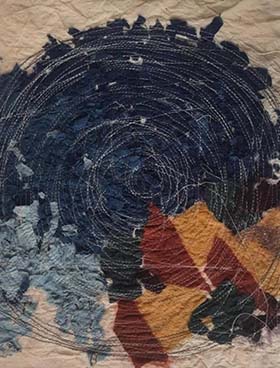ABSTRACT
Bearing a strong colonial influence, the broad spectrum of ‘Domestic Crafts’ has been an integral part of the Indian middle-class households, in the last two centuries but has often positioned as a hobby despite being practised by intergenerational women across the country. Having a non-Indian provenance, the gradual spread of such domestic craft practices can be attributed to the surge in missionary activity during the British Raj, the establishment of convent schools as well as increased access to British magazines & periodicals in the 20th century (Kaur, 2021; Mehta, 1971; Sharma, 1986; Sharma, 1999; Singh, 2018; Singh, 1983).
What is done within the domestic spaces strongly contributes to the material culture of the region. Although crafts like Phulkari, spinning, and weaving in Punjab that originated from such domestic spheres, soon gained national importance, however others like embroidery, crochet and needlework vanished into obscurity – their relevance diminishing with their close association with concepts of domesticity and femininity. Jasvinder Kaur (2021) in her recent book has beautifully illustrated the Victorian influence and the emergence of domestic crafts practices. Through my proposed research, I want to interrogate further the nuances of how the skills of needlework and embroidery were passed down from the missionaries to the larger populations, primarily through convent education. Through an in-depth literature review and secondary research-based study and analysis of archives (Newspapers, photographs, reports, gazetteers, and periodicals in circulation at that time), the paper aims to unearth references such as the institutions, influential women, and important centres for production.
Limiting the research to only needlework and embroidery, the objective is to map the cultural institutions where these techniques were taught and also discover important photographs, and other evidence that will provide an enhanced understanding of how the dissemination of skill was happening – from missionaries to the common folk. Through this mapping of cultural knowledge across undivided Punjab, the research will explore questions such as what were the original techniques that the girls learnt at school? How did the location and geography of these institutes impacted the domestic landscape of a particular region. What kind of products were being made and how has that shifted in today’s time? What kind of spaces were the crafts being worked upon, whether they were homes, prisons or public spaces?
References
1. Kaur, J. (2021). Influence of the British Raj on the Attire and Textiles of Punjab. Rupa Books
2. Mehta, H. (1971). A History of the Growth and Development of Western Education in the Punjab 1846-1884. Patiala: Language Department
3. Sharma, M. R. (1986). The Arya Samaj and the Origin of College Education of the girls in Jalandhar. Economic and Political Weekly, 21(17).
4. Sharma, R. (1999). The women question and the socio-religious reform in the Punjab late 19th and early 20th century. Punjab History Conference.
5. Singh, C. L. (2018). Making “ideal” Indian women: Annie Besant’s engagement with the issue of female education in early twentieth-century India. Paedagogica Historica, 54(5), 606-625.
6. Singh, S. (1983). Educational Aspects of Arya Samaj. Amritsar: Guru Nanak Dev University
ABOUT AUTHOR
PRAGYA SHARMA
DESIGN PRACTITIONER, RESEARCHER AND WRITER
I am a design practitioner, researcher and writer, and have been involved in academics for the last five years. Before joining academics, I briefly took up roles as a menswear designer as well as a graphic designer in the industry. Working at the intersection of design, craft and sustainability, my research practice is built around sustainable design practices and community & cultural narratives, within the Indian context. I have regularly written and presented papers at various national and international conferences on themes ranging from zero-waste design, and design pedagogy, to various Indian crafts & communities. Alongside academics and research, I manage a small enterprise wherein I develop crochet jewellery accessories, working closely with artisans in New Delhi.


